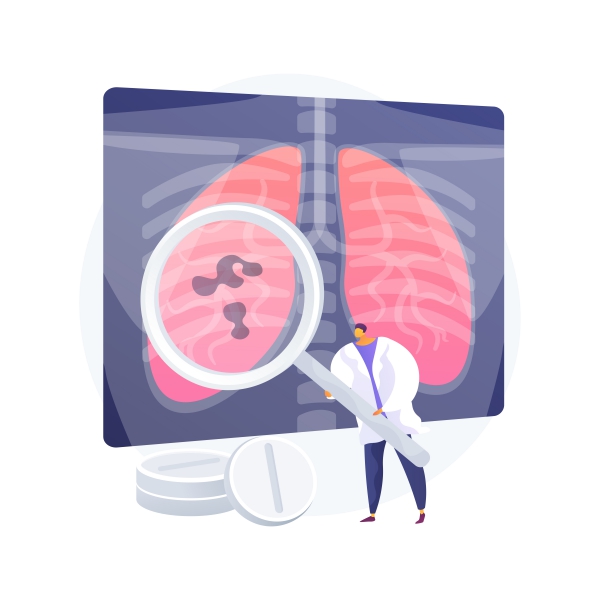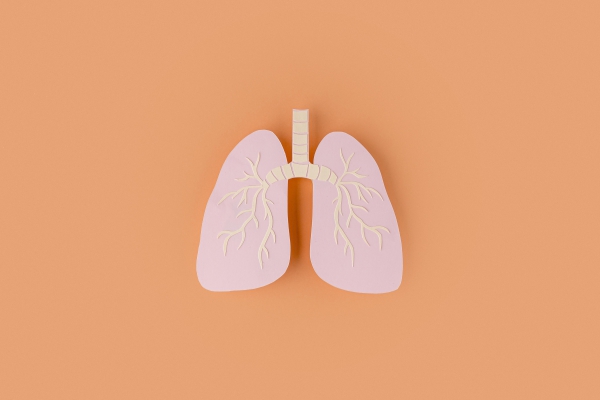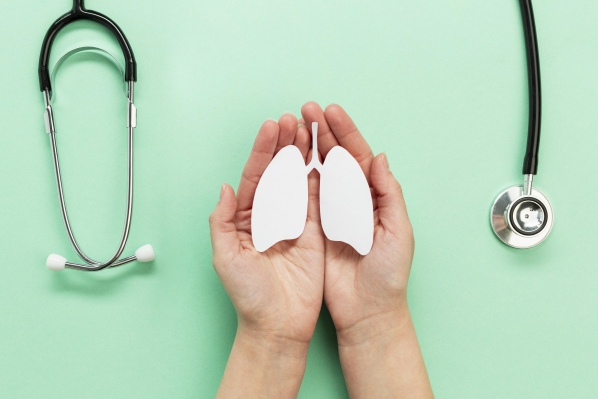What is sarcoidosis?
Sarcoidosis is a disorder that affects various organs (multisystem disease) in the body forming nodules, known as granulomas, of inflamed tissues. With time, the nodules may increase in size till they join together forming larger granulomas that alters normal body functions. For example, if the nodules are present in the lungs, the disease may progress till it compromises breathing. The most commonly affected organs are the lungs. However, sarcoidosis may also affect the skin, eyes, nose, muscles, heart, liver, spleen, intestines, testes, nerves, joints and the brain.
In the United States, sarcoidosis affects around 5-40 people per 100,000 population. It is most common among African Americans as it is 10 times more common among this population compared to whites. Around 20% of people with the disease report that they have a family member with the same condition. Sarcoidosis has been associated with working on the World Trade Centre debris pile after the terrorist attack which occurred in September 2001. The condition is slightly more common in females compared to males. Its occurrence peaks in the 25-35 years age range.
What are the causes and risk factors for sarcoidosis?
The exact cause of sarcoidosis is unknown till date. However, one theory suggests that some people are genetically susceptible to certain environmental agents. As a result, your body responds to these agents with an exaggerated immune reaction. The cells that play a role in immune responses are the ones that accumulate in your organ tissues forming the granulomas. However, sarcoidosis is not an autoimmune disease. Responsible environmental agents may include bacteria, viruses, dust or chemicals such as beryllium, aluminium and zirconium.

You are more at risk of having the disease if:
- You are aged between 20-40 years
- You have a family member with the similar disease
- You are of African descent
What are the signs and symptoms of sarcoidosis?
The symptoms of sarcoidosis depend on the organ system affected. The most commonly affected organ is the lung. The following summarises the symptoms that may be present in sarcoidosis with respect to the affected organ:
- Lungs: Cough, Shortness of breath, chest pain, fatigue, weakness, fever and loss of weight.
- Skin: Painless rash or deep scars on the face, neck, arms, legs or trunk. The severity of the skin lesions is often closely related to the severity of internal organs involvement.
- Eyes: Inflammation of the eye structures, increased pressure inside the eye (glaucoma), cataract and loss of vision.
- Kidneys: Disturbed regulation of calcium in the body and kidney failure are possible complications of sarcoidosis.
- Heart: Abnormal cardiac rhythms, heart failure or even death may occur in sarcoidosis if the heart is involved.
- Nervous system: Inflammation of the brain or membranes covering the brain, facial paralysis, paralysis of the limbs, muscle weakness and pain in the extremities.
- Musculoskeletal system: Pain and swelling in the joints, change in bone structure and muscular pain.
- Reproductive system: If sarcoidosis affects the testes, male infertility may occur. It does not usually affect the female reproductive system.
- Spleen: Involvement of the spleen may result in anemia or other blood abnormalities.

How is the diagnosis of sarcoidosis made?
To make the diagnosis of sarcoidosis, your doctor will first start by taking a thorough history from you. He/she will then proceed by performing a physical examination to look for signs of sarcoidosis. There is no specific test for sarcoidosis. The diagnosis relies on the history, physical examination and some other tests that can help in making the diagnosis. A chest X-ray or computed tomography (CT) scan may be done to look for involvement of organs such as the lungs. If abnormal nodules are found on imaging tests, a biopsy may be needed for further evaluation. In this procedure, a special device is used to collect a sample of tissue from the affected organ for further analysis under a microscope. These tissues may also be obtained during a bronchoscopy.
As soon as the diagnosis is confirmed, further tests such as magnetic resonance imaging (MRI) and/or PET scan may be requested to evaluate the extent and severity of the condition as well as involvement of other organs.

How is sarcoidosis managed?

There is no specific treatment for sarcoidosis. The main aim of the management is to alleviate symptoms. Many people do not even require treatment as the disease is likely to resolve on its own with few or no complications. Treatment is mostly recommended in people with lung problems that are getting worse with decline in lung function. Symptomatic treatment options include the following:
- Steroids: Also known as glucocorticoids, these medications are effective in decreasing inflammation in the affected organs. A common example is prednisone. If you have mild symptoms such as skin lesions, inflammation of the eye or cough, steroids may be given in the topical form such as creams, eye drops or inhalers. In some cases, oral steroid medications may be prescribed and taken for a period of about 6-12 months. Some side effects may arise from long term steroid therapy. These include: weight gain, increased appetite, acne, mood swings, thinning of bones and difficulty sleeping.
- Methotrexate: This medication is also effective in treating inflammation. It is also a chemotherapy and immune-system suppressant medication.
- Other medications: Some other medications with anti-inflammatory and immunosuppressant properties may be used in the treatment of sarcoidosis. These include azathioprine, leflunomide, cyclophosphamide and chloroquine. Colchicine can also help in relieving joint pain and swelling. Nonsteroidal anti-inflammatory medications such as ibuprofen can help reduce swelling, fever and pain. However, its use is not recommended in pulmonary sarcoidosis.
What is the prognosis for sarcoidosis?

Most people do not need any kind of treatment as they improve on their own with time. However, if imaging of the chest shows advanced disease or involvement of organs outside of the lungs (for example the heart or the brain), this indicates that the outcome of the disease is likely to be poor. In 11% of affected individuals, the cause of death is pulmonary hypertension (increased pressure of blood in the arteries of the lungs). The overall death rate is about 5%.

Source:
Baughman RP, Lower EE, du Bois RM. Sarcoidosis. Lancet 2003; 361:1111
Thomas KW, Hunninghake GW. Sarcoidosis. JAMA 2003; 289:3300
King, T., 2020. Clinical manifestations and diagnosis of pulmonary sarcoidosis
Kamangar, N., 2020. Sarcoidosis
Cox CE, Davis-Allen A, Judson MA. Sarcoidosis. Med Clin North Am. 2005 Jul. 89(4):817-28.



